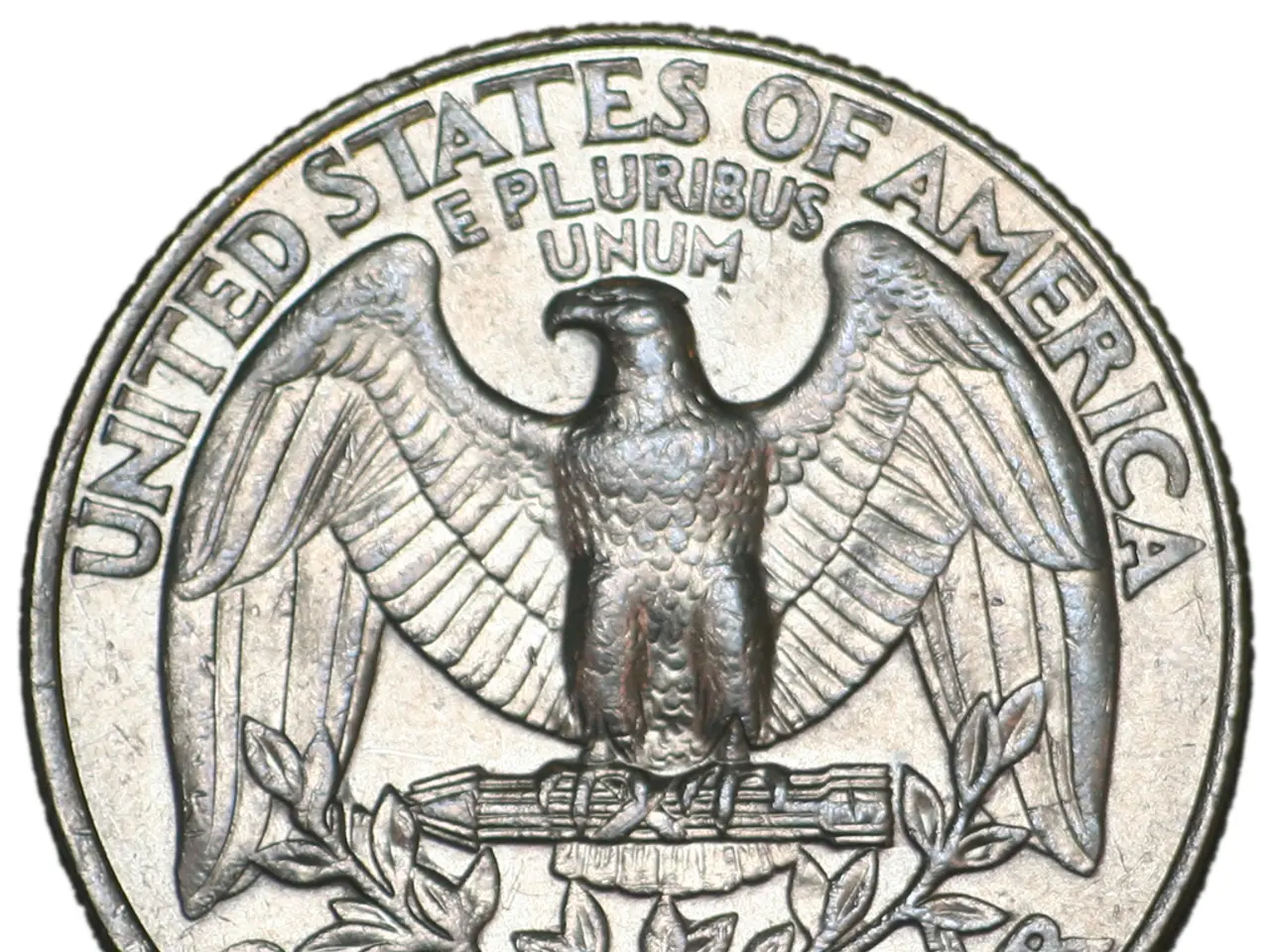Stock Price Drop of Circle Internet This Week Explained
In the rapidly evolving world of cryptocurrency, Circle Internet Group, the issuer of one of the most popular stablecoins, USDC, has seen significant growth. However, concerns over the company's valuation, revenue projections, and regulatory risks have cast a shadow over its future performance.
Circle reported sales of $1.7 billion in 2021, with a net income of $155.7 million. A substantial portion of this revenue is attributed to partnerships, particularly with Coinbase. Last week, the passage of the Genius Act in the Senate sent Circle stock soaring, creating a market capitalization of over $43 billion. However, this week, news that top Republicans want to fast-track the Genius Act through the House did not prevent Circle stock from falling by 24.9%.
The main concerns surrounding Circle Internet Group revolve around overstated revenue projections, regulatory and market risks, heavy reliance on interest rates, and analyst sentiment and valuation. Analysts argue that Circle’s consensus 2027 revenue projection of $4.5 billion may be 25–30% overstated due to potential declines in interest rates, which would reduce the interest income derived from USDC reserves. If the growth of USDC in circulation slows, this would further limit Circle’s revenue potential.
New regulations such as the proposed GENIUS Act could commoditize stablecoins, eroding Circle’s pricing power and margins. Regulatory uncertainty also persists, with stricter requirements or increased competition potentially impacting Circle’s unique market position. The business model of Circle is highly sensitive to changes in interest rates, since a significant portion of its revenue comes from interest earned on the reserves backing USDC. Lower rates directly translate to reduced income.
As more stablecoin issuers enter the market and regulations standardize offerings, Circle may find it harder to maintain premium margins. Some analysts, like those at Mizuho, have downgraded Circle’s stock, citing these risks and projecting a downside of up to 59% from recent prices. The stock’s IPO price was $31, which surged to a high of $263 before settling around $188, indicating significant volatility and speculation.
While the partnership with Coinbase is foundational, the revenue-sharing agreement is up for renewal in 2026, adding uncertainty about future terms and profit splits. The stock’s decline this week, after an initial post-IPO run, underscores the need for Circle to address these concerns and navigate the complex regulatory landscape to secure its future success.
| Concern | Description | |----------------------------------|-----------------------------------------------------------------------------------------------------| | Overstated Revenue Projections | Consensus 2027 revenue likely overstated due to lower interest rates and stagnant USDC circulation[2]. | | Regulatory and Market Risks | New laws may commoditize stablecoins and erode margins; regulatory uncertainty persists[2]. | | Interest Rate Sensitivity | Business model heavily reliant on interest income, vulnerable to rate declines[2][4]. | | Analyst Sentiment & Valuation | Analyst downgrades, high volatility, and upcoming revenue-sharing renegotiations add uncertainty[2][3]. |
- The analysts at Mizuho have downgraded Circle's stock, citing concerns about overstated revenue projections, regulatory and market risks, and interest rate sensitivity.
- The passage of the Genius Act sent Circle's stock soaring and created a market capitalization of over $43 billion last week, highlighting the importance of investing wisely in the technology sector and understanding the potential regulatory impacts.
- Circle's partnership with Coinbase is foundational, but the revenue-sharing agreement is up for renewal in 2026, adding uncertainty about future terms and profit splits, emphasizing the need for investing strategies that prioritize long-term viability and adaptability.




